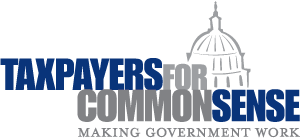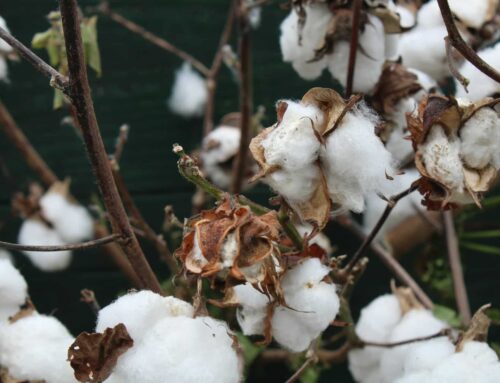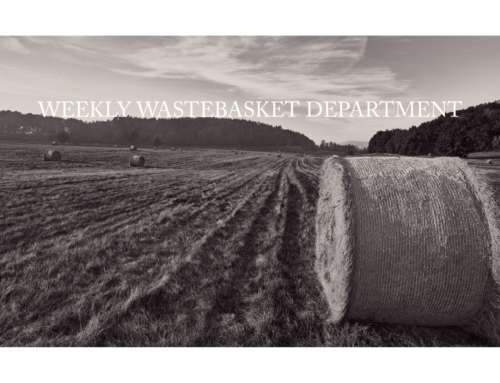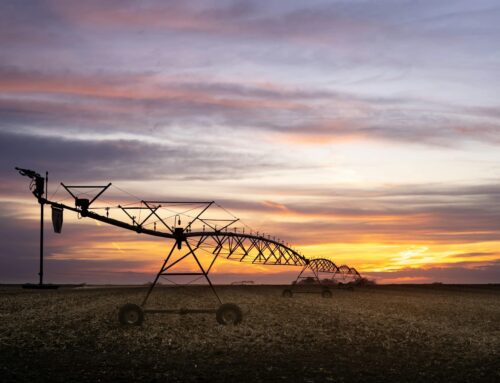(Download a pdf of this testimony)
|
Testimony of Steve Ellis Vice President, Taxpayers for Common Sense Committee on Oversight and Government Reform's hearing on “Waste, Fraud, and Abuse in the Federal Crop Insurance Program” May 3, 2007
Good morning Chairman Waxman, Ranking Member Davis, members of the Committee. Thank you for inviting me here today to testify on the Federal Crop Insurance Program. I am Steve Ellis, Vice President of Taxpayers for Common Sense, a national non-partisan budget watchdog organization that has studied the agriculture subsidies system since our inception in 1995. I want to take this opportunity to applaud the critical work this committee is undertaking. The broad portfolio of the Committee enables it to identify important trends and problems across the federal government and to approach programs with an independent and unbiased eye, which is often difficult for Committees with original jurisdiction. This hearing is a perfect example. On Tuesday, the House Agriculture Subcommittee on General Farm Commodities and Risk Management also held a hearing on crop insurance. Two officials from the U.S. Department of Agriculture (USDA) testified at that hearing, but the second panel was made up entirely of representatives of crop insurance companies and agents. To put it in perspective, in 2005 insurers made more than $1.7 billion providing crop insurance while taxpayers spent $3.1 billion on a program that delivered slightly more than $750 million in payments to farmers.1 We have already heard a great deal about federal crop insurance today – about waste, fraud and abuse in the program, and about how to hopefully rein it in. After briefly discussing program particulars, I would like to add a taxpayer perspective on the role of federal insurance programs, including how to get the incentives and disincentives right and reduce waste, fraud and abuse. Jerry Skees, an agriculture economist at the University of Kentucky, said it best when he stated that “Crop insurance is a good idea gone awry. It’s expensive, complex and inefficient.”2 “Gone awry” In 1980, Congress decided to tap private insurance companies in a bid to expand the crop insurance program. Congress’ goal was to end all disaster payments. Crop insurance has no more met its goal of ending disaster payments than World War I met the goal of ending all wars. Just last week, Congress passed an emergency supplemental bill that includes $3.5 billion in agriculture disaster spending. Earlier versions of this disaster assistance for 2005 and 2006 cost more than $7 billion. Since the 1994 expansion of crop insurance premium subsidies, Congress has approved more than $36 billion in agriculture disaster assistance. Building on that costly trend, the Chairman of the Agriculture Committee in the House wants to create a permanent disaster title in the upcoming farm bill. Commodity payments, crop insurance and disaster payments provide a fiscal security blanket for favored segments of agriculture. But the cost to taxpayers is billions of dollars every year, and the dirty little secret is that a few insurance companies and agents – not farmers – make out like bandits. “Expensive” The crop insurance program has its roots in the 1930s, but the program we know today was shaped by changes in 1980, 1994 and 2000.3 In 1980, the government shifted to private companies to administer and grow the insurance program and increased subsidies to entice the companies to offer crop insurance. Subsidies were increased even more in 1994 and 2000, and now premium subsidies average roughly 60 percent. That is to say, out of every dollar a private insurer is “charging” for crop insurance, the farmer is paying 40 cents while the taxpayer picks up 60 cents. This is an enormous subsidy by any measure. In addition, the federal government pays insurance companies to sell and administer policies. There are 16 companies in the 2007 crop insurance program.4 These administrative and operating (A&O) subsidies run about 21.5 percent of total premium charges. These funds are used by companies to pay overhead, administer the system, and verify claims. But the largest A&O expense for companies is the agent commissions for the policies they sell; some agents are paid up to 20 percent of the premium on policies. And of course, the companies take away profits (underwriting gains) in good years, which by recent standards are roughly three years out of four.5 To put this in perspective, in 2006, the crop insurance program provided nearly $50 billion of insurance coverage to more than 240 million acres, and subsidized premiums to the tune of $2.7 billion.6 In 2005, the program provided $44 billion in coverage to roughly the same acreage and paid $2.3 billion in premium subsidies.7 According to a Washington Post analysis, crop insurance companies made a record profit in 2005 — $927 million. On top of these record profits, the federal government paid them $829 million in administrative fees to run the system. In 2005, farmers got $752 million in payments to compensate for their losses.8 Crop insurance companies recognize that they have got a good thing going. The four crop insurance organizations that testified at Tuesday’s House Agriculture Committee hearing on the program gave more than $1 million in political contributions over the last 10 years, the vast majority to members of Agriculture Committee.9 In many ways insurance is like gambling, but in a bizarre twist, the insurance companies are the “house” and the federal taxpayer is the perpetual loser. This program has become less about crop insurance for farmers and more about revenue assurance for insurance companies. “Complex” There are many variations of the crop insurance program. Some are based on crop yield using actual farm history or on yield history for the applicable county; still others insure on revenue, whether based on entire farm or county average or a range of expected revenues. One of the most common types of coverage is catastrophic coverage, which pays 55 percent of the price of a crop after losses exceed 50 percent.10 A USDA Risk Management Agency (RMA) fact sheet notes that they provide policies for more than 100 crops – including everything from carambola trees and cigar wrapper tobacco to Minneola tangelos and winter squash. Another RMA fact sheet lists ten different types of policies, all of which have a variety of provisions11 Despite this complexity, more than 80 percent of the eligible crop acreage is covered. Not to confuse matters, but by different measures only 16 percent of farms purchased crop insurance in 2002, and more than 40 percent of the total U.S. crop value was insured.12 The difference is that roughly half of all U.S. farms raise livestock, so rarely purchase crop insurance. And among crop farms, the predominant purchasers are field crop producers meaning large farms are insuring – at least at catastrophic levels – while many smaller producers are turning away. This is not to say that farmers are ignorant of their risk. Considering that theirs is one of the world’s oldest professions, farmers have found means to diversify their risk. Crop rotations, irrigation, and farming multiple crops are all forms of limiting risk. In addition, many farms receive significant amounts of off-farm income. So it is fair to say that farmers do quite a bit of risk management without any federal subsidies and without the Risk Management Agency. In fact, these farm-level risk management techniques help explain why such large premium subsidies are required to induce farmers to purchase crop insurance. The farms most likely to purchase crop insurance are those where more than half of the total household income comes from the farm. In fact, in 2004 nearly 80 percent of corn, soybean, wheat and cotton acres were insured at some level. This represents four out of the big five program crops (rice is the fifth and 70 percent of rice acres are insured). So the crops that are the most heavily subsidized under the current farm bill are also the most heavily insured – by heavily subsidized insurance.13 “Inefficient” Federal insurance programs are always inefficient. The federal government is always the insurer of last resort, so insurance programs are foisted upon the government as a reaction to a perceived market failure, real or imagined. Even without considering that Uncle Sam insurance is a business failure waiting to happen, the federal government fights its challenges with one or both arms tied behind its back: setting rates, providing coverage are political calculations, and of course, no one ever gets kicked out of a program for being a bad risk. Any discussion of federal insurance programs like NFIP, TRIA or crop insurance being actuarially sound is laughable. There is no 18-year-old boy in a red Ferrari in the federal insurance programs. Everyone is a 40-year-old mother in a minivan. Besides, there is no incentive or requirement to charge premiums enough to develop a credible catastrophic reserve or reinsurance fund. In federal insurance programs, the U.S. Treasury is the catastrophic reserve, and the U.S. taxpayers are the reinsurers. But even by federal insurance program standards, the crop insurance program is incredibly inefficient. The flood insurance program charges ridiculously low premiums and contains indirect subsidies, whereas over half of the tab for crop insurance premiums is picked up by the federal government. Adding to the costs, the government negotiates how to split gains and losses across the system in the Standard Reinsurance Agreement. Under the current agreement, insurers are able to foist their high-risk policies onto the federal government and keep the lower-risk policies in their portfolio – in effect maximizing each company’s gain in good years and minimizing losses in bad years. Remember, in 2006 companies returned record profits that were only 12 percent higher than what they received in administrative payments. Crop insurance is a total sucker bet for taxpayers. Removing higher-risk policies from insurers’ portfolios reduces incentives to work with farmers to mitigate risks and plan for loss years and to effectively monitor policies for fraud. In addition, the system of subsidies and paternalistic federal attitudes send the wrong signal to farmers. There is no real incentive to minimize risk, and even worse, there is no real disincentive for higher risk activities like farming on marginal land. In fact, maximizing the likelihood of loss is actually a tactic for those abusing the system. Waste, Fraud and Abuse Expensive, complex and inefficient is a ready-made recipe for waste, fraud and abuse. Much of the recent successes at nabbing individuals milking the crop insurance system came through stepped up enforcement and data mining to identify anomalies. But there is much more that can be done. Recent USDA IG reports to Congress highlighted a North Carolina corporation that used false documents to obtain more than $9.28 million in crop insurance payments for tomatoes and sought an additional $3.8 million in payments as well. In another case, an Iowa family defrauded the government in attempts to obtain $3.3 million of agriculture payments. RMA also overpaid five producers nearly $400,000 by overestimating the yield from their crops. A 2005 radio series highlighted attempts to harvest taxpayer dollars from the crop insurance system. One story highlights the fact that you don’t have to cheat on forms to make a quick buck out of the crop insurance system; farming is so fickle that you can just sabotage your crop to collect a check. In this case, which the IG pursued but never prosecuted, farmers insured 6,600 acres of watermelons in South Texas. None of the 19 farmers, who were recruited by the insurance agent’s son, had any experience growing watermelons. Not surprisingly, the crop failed and those 19 farmers received $5.5 million in insurance payments. Before the watermelon program was closed, $47.8 million insurance claims were paid, representing a full 75 percent of the insured liability.14 Unfortunately, we could go on. To tackle waste, fraud and abuse in the Crop insurance program, you have to tackle the program’s overall expense, complexity and inefficiency. Rather than just augmenting the program into a large farm revenue assurance scheme as the Administration and others are proposing (and that crop insurers oppose), Congress should fundamentally re-evaluate the program itself. The interplay between subsidies for program crops, crop insurance and disaster assistance must be examined more closely. Why are many farmers reluctant to purchase adequate insurance coverage? Is it because they diversify their risk or self-insure, or rely on annual disaster assistance giveaways? With 80 percent of eligible acreage enrolled, farmers obviously know the system; do we actually need insurance agents to sell the policies? Agents are a significant source of overhead costs. The premium subsidies are largely one-size fits all. If you started purchasing crop insurance in the early 1990s, you saw your premiums steadily decline as the federal subsidy increased to get more people into the program. Shouldn’t the incentive be to bring more farmland into the program not subsidize those already purchasing insurance? Should there be a requirement to fully insure one’s crops in order to be eligible for crop subsidies or disaster assistance? After examining all of these questions a few clear responses come to the surface: Disaster assistance must be ended. The prospect of ad hoc disaster assistance undercuts Corp insurance and at the very least encourages underinsuring. Farmers, like all businesses, should adequately insure, and if they choose not to they should not be bailed out by the taxpayer. Modernize Crop Insurance. Some of this is ongoing; data mining and mapping tools have helped increase enforcement and catch abusers. But even beyond that, farmers are among the most technically savvy business men around and with 80 percent of the eligible acreage in the program, farmers know what is available. Agents and their costly fees should be phased out in favor of the internet for crop insurance sign-ups. Create effective incentives and disincentives. Encourage individual farmers to diversify risk and reduce exposure by providing reduced premiums as an incentive. Premium subsidies should be a reward, not a right. Base revenue insurance plans on total income. Increase mandatory insurance levels and deny crop subsidies for farmers that do not adequately insure. Use Farm Service Agency officials to enforce and police crop insurance policies and enact strong punitive actions for abusers of the program. Increase competition. It is time to scrap the Soviet style planned economy that dominates crop insurance. The Standard Reinsurance Agreement must be redrafted to introduce greater competition and innovation in the marketplace. If there is not competition then the value of private companies servicing crop insurance evaporates, and since government currently bears virtually all the risk anyway, shifting some or the entire program back to government operation should be an option. Again, I want to thank the Committee for holding this hearing and inviting Taxpayers for Common Sense here to testify. With the farm bill expiring later this year, this is an important time to consider this important issue. I would be happy to answer any questions you have.
1. Gilbert M. Gaul, Dan Morgan and Sarah Cohen, “Crop Insurers Piling Up Record Profits,” Washington Post, October 16, 2006; A1 |















Get Social